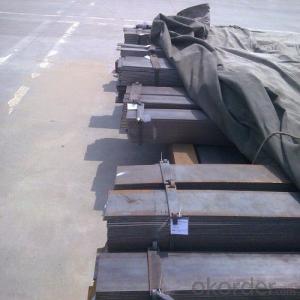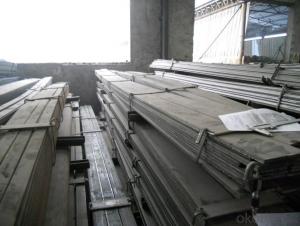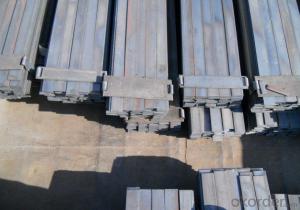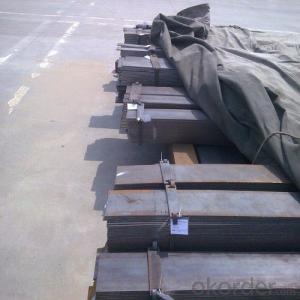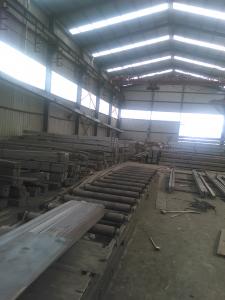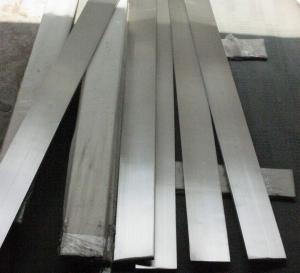Steels Flat Bar with Material Grade Q235
- Loading Port:
- Tianjin
- Payment Terms:
- TT OR LC
- Min Order Qty:
- 25 m.t.
- Supply Capability:
- 10000 m.t./month
OKorder Service Pledge
OKorder Financial Service
You Might Also Like
OKorder is offering high quality Flat Bar at great prices with worldwide shipping. Our supplier is a world-class manufacturer of steel, with our products utilized the world over. OKorder annually supplies products to European, North American and Asian markets. We provide quotations within 24 hours of receiving an inquiry and guarantee competitive prices.
Product Applications:
Slit Cutting Flat Bars are ideal for structural applications and are widely used in the construction of buildings and bridges, and the manufacturing, petrochemical, and transportation industries.
Product Advantages:
OKorder's Flats Bars are durable, strong, and resist corrosion.
Main Product Features:
· Premium quality
· Prompt delivery & seaworthy packing (30 days after receiving deposit)
· Corrosion resistance
· Can be recycled and reused
· Mill test certification
· Professional Service
· Competitive pricing
Product Specifications:
Manufacture: Hot Rolled
Grade: Q195 – 235
Certificates: ISO, SGS, BV, CIQ
Length: 6m – 12m, as per customer request
Packaging: Export packing, nude packing, bundled
Chemical composition of Q235
Alloy No | Grade | Element(%) | ||||
C
| Mn
| S
| P
| Si
| ||
Q235
|
B
|
0.12—0.20 |
0.3—0.7 |
≤0.045 |
≤0.045
|
≤0.3
|
Physical properties of Q235
Alloy No | Grade | Yielding strength point(Mpa) | Tensile strength (Mpa) | Elongation after fracture(%) | ||||||
Thickness (mm) | Thickness (mm) | |||||||||
≤16 | >16--40 | >40--60 | >60--100 | ≤16 | >16--40 | >40--60 | >60--100 | |||
≥ | ≥ | |||||||||
Q235 |
B |
235 |
225 |
215 |
205 |
375--500 |
26 |
25 |
24 |
23 |
FAQ:
Q1: How soon can we receive the product after purchase?
A1: Within three days of placing an order, we will begin production. The specific shipping date is dependent upon international and government factors, but is typically 7 to 10 workdays.
Q2: How do we guarantee the quality of our products?
A2: We have established an advanced quality management system which conducts strict quality tests at every step, from raw materials to the final product. At the same time, we provide extensive follow-up service assurances as required.
Q3: The products are invoicing on theoritical weight or on actual weight?
A3: We can do it in both manners, according to the customers' request.
Images:
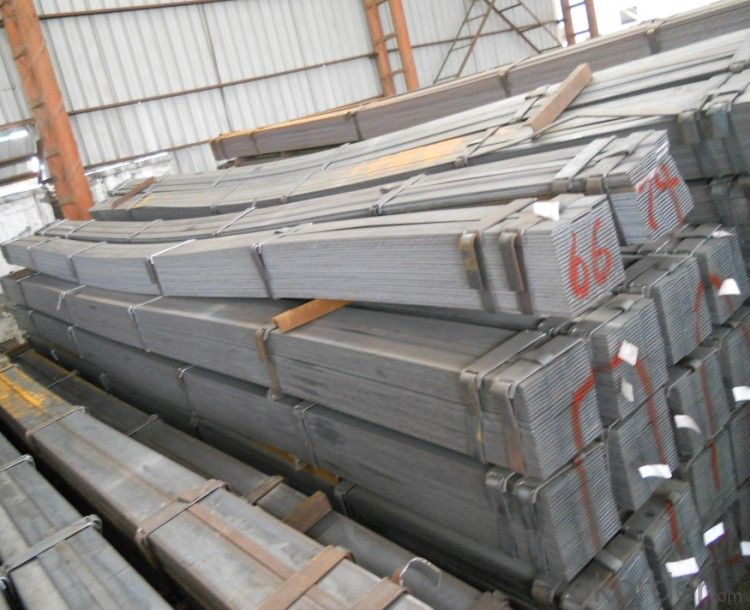
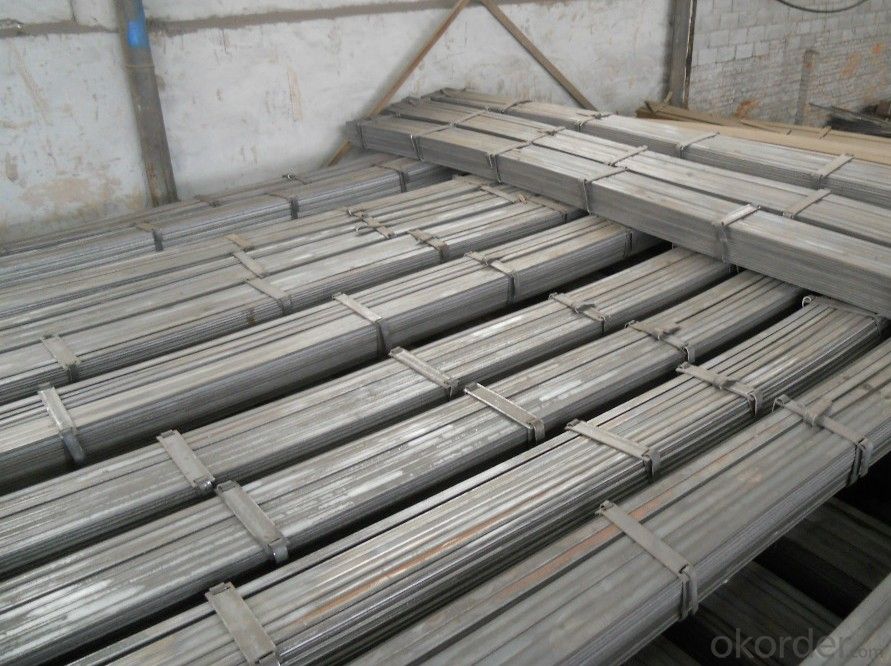
- Q:Are steel flat bars available in different surface hardness options?
- Yes, steel flat bars are available in different surface hardness options. The hardness of steel flat bars can be modified through various heat treatment processes to achieve different levels of hardness, such as annealing, quenching, and tempering. This allows for customization based on specific application requirements.
- Q:What are the different methods of surface buffing for steel flat bars?
- Steel flat bars can be surface buffed using various methods, each with its own benefits and applications. Some commonly used techniques include: 1. Manual buffing: By using a handheld buffing wheel or pad, the surface of the steel flat bar can be polished manually. This cost-effective option is ideal for small projects and provides greater control over the buffing process. 2. Machine buffing: Powered buffing machines with rotating wheels or pads are employed in machine buffing. This method offers faster and more consistent results compared to manual buffing, making it suitable for large-scale projects or industrial applications. 3. Abrasive belt buffing: Imperfections on the steel flat bar can be removed and a smooth surface achieved by using abrasive belts made of sandpaper or cloth. This versatile technique can be used for both light and heavy buffing, depending on the grit size of the belt. 4. Chemical buffing: Specialized chemicals or compounds are used in chemical buffing to eliminate oxidation, stains, or other surface contaminants from the steel flat bar. This method is often combined with mechanical buffing to achieve a high-quality finish. 5. Electropolishing: Electropolishing, an electrochemical process, is employed to remove a thin layer of material from the steel flat bar's surface, resulting in a smooth, mirror-like finish. Industries that prioritize hygiene and corrosion resistance, such as pharmaceutical or food processing, commonly use this method. Each method has its own advantages and limitations, and the most suitable option depends on factors such as desired finish, project scale, available equipment, and budget. It is crucial to consider these factors and seek guidance from professionals or experts in the field when determining the best method for surface buffing steel flat bars.
- Q:Are steel flat bars used in the manufacturing of appliances?
- Yes, steel flat bars are commonly used in the manufacturing of appliances. They are often used as a structural component or for reinforcement purposes due to their strength, durability, and versatility.
- Q:What industries commonly use steel flat bars?
- The industries that commonly use steel flat bars include construction, manufacturing, transportation, automotive, and oil and gas.
- Q:Does the cable trench need grounding?
- The cable trench needs grounding.
- Q:How do you prevent warping or distortion of steel flat bars during heat treatment?
- To prevent warping or distortion of steel flat bars during heat treatment, there are several key measures that can be taken. 1. Proper selection of steel grade: It is crucial to choose a steel grade that is less prone to warping or distortion during heat treatment. Some steel grades have better dimensional stability, such as low alloy steels, which can help minimize these effects. 2. Uniform heating and cooling: Ensuring a uniform and controlled heating and cooling process is essential. This can be achieved through the use of proper heating equipment, such as industrial furnaces with well-distributed heat sources. It is important to avoid localized heating or cooling, as this can lead to uneven expansion or contraction, causing warping or distortion. 3. Preheating: Preheating the steel flat bars before heat treatment can help alleviate internal stresses and reduce the risk of warping. This can be done by gradually increasing the temperature to the desired level in a controlled manner. 4. Proper fixturing: The use of appropriate fixtures or jigs during heat treatment can help support the steel flat bars and minimize distortion. Fixtures should be designed to evenly distribute the load and prevent bending or twisting during the heating and cooling process. 5. Slow cooling: Rapid cooling can induce internal stresses, leading to warping or distortion. Therefore, it is recommended to cool the steel flat bars slowly after heat treatment. This can be achieved by placing them in an insulated container or furnace, or by using heat sinks to control the cooling rate. 6. Stress-relieving treatment: After heat treatment, a stress-relieving treatment can be applied to further reduce internal stresses. This involves heating the steel flat bars to a specific temperature and holding it for a certain period of time, followed by a controlled cooling process. Stress-relieving can help restore dimensional stability and minimize warping or distortion. By following these preventive measures, it is possible to minimize the warping or distortion of steel flat bars during heat treatment, ensuring that the desired properties are achieved while maintaining dimensional integrity.
- Q:What is the typical weight of a steel flat bar?
- The typical weight of a steel flat bar can vary depending on its size and thickness. However, as a general guideline, a standard steel flat bar with a width of 1 inch and a thickness of 1/4 inch typically weighs around 0.22 pounds per foot. This weight can increase or decrease proportionally based on the dimensions and thickness of the flat bar. It is always recommended to check with the manufacturer or supplier for specific weight information of a particular steel flat bar.
- Q:What are the standard tolerances for width and thickness in steel flat bars?
- The standard tolerances for width and thickness in steel flat bars vary depending on the specific industry and application. However, commonly accepted tolerances for width range from +/- 0.005 to +/- 0.030 inches, while tolerances for thickness typically fall within +/- 0.002 to +/- 0.020 inches. It is important to consult the relevant industry standards or manufacturer specifications for precise tolerances required for a specific steel flat bar.
- Q:Lightning protection grounding, what is called three surface welding?
- Lightning protection, grounding, the three sides of the welding:The buried depth of the grounding body shall not be less than 1m at the top, and the steel pipe grounding body shall be vertically configured.The length of the vertical grounding body shall not be less than 2.5m, and the spacing between them shall not be less than 5m.
- Q:What's the meaning of ground flat steel -60*8 hot dip galvanizing?
- Hot galvanizing process: finished pickling and washing and plating liquid - drying - plating - cooling - drug - Cleaning - Polish - hot galvanized, hot galvanized 1 completed by the more ancient hot plating method development, since 1836 the French to hot galvanizing applied in industry has been more than 170 years since. The history of the. In the past thirty years, with the rapid development of cold rolled strip steel, galvanizing industry has been developed on a large scale.
1. Manufacturer Overview |
|
|---|---|
| Location | |
| Year Established | |
| Annual Output Value | |
| Main Markets | |
| Company Certifications | |
2. Manufacturer Certificates |
|
|---|---|
| a) Certification Name | |
| Range | |
| Reference | |
| Validity Period | |
3. Manufacturer Capability |
|
|---|---|
| a)Trade Capacity | |
| Nearest Port | |
| Export Percentage | |
| No.of Employees in Trade Department | |
| Language Spoken: | |
| b)Factory Information | |
| Factory Size: | |
| No. of Production Lines | |
| Contract Manufacturing | |
| Product Price Range | |
Send your message to us
Steels Flat Bar with Material Grade Q235
- Loading Port:
- Tianjin
- Payment Terms:
- TT OR LC
- Min Order Qty:
- 25 m.t.
- Supply Capability:
- 10000 m.t./month
OKorder Service Pledge
OKorder Financial Service
Similar products
New products
Hot products
Hot Searches
Related keywords
